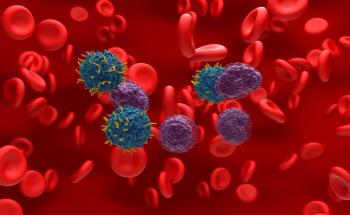
nAMD Recurrence Could Be Predicted Using Deep Learning Model
A deep learning model may be able to outperform ophthalmologists in predicting neovascular age-related macular degeneration (nAMD) recurrence.
Recurrence of neovascular
nAMD leads to the growth of blood vessels in the subretinal or intraretinal layers of the eye which can cause edema, hemorrhage, and even blindness. Anti-vascular endothelial growth factor (anti-VEGF) injections are often used to treat nAMD. Treat-and-extend (T&E) treatments can also be used but could be overused based on the condition of the patient and the limited research on who can extend the intervals between injections. Creating a model to estimate the amount of time between intervals could help in evaluating recurrence in these patients to determine treatment.
The analysis of medical records took place from January 2015 to June 2021. Patients were enrolled if they were treatment-naïve eyes that were diagnosed with nAMD. Ranibizumab or aflibercept were given to patients monthly for 3 months. Patients were excluded if they had a longer interval between injections than 6 weeks, had extrafoveal nAMD, had non-exudative AMD, had prior treatment in their eye, had another injection outside of aflibercept or ranibizumab, had macular degeneration, had cataract surgery within the previous 3 months, or had retinal vascular disease.
Patients had their demographic characteristics collected, including age, sex, and underlying diseases. Patients had an OCT image taken at baseline and at every injection; a last OCTa image was taken 4 weeks after the last injection. Intraretinal fluid (IRF) and subretinal fluid (SRF) were markers of recurrence of nAMD, with subretinal hemorrhage also being an indicator. The disappearance of IRF and SRF was evaluated as a good result in treatment.
The deep learning model was based on DenseNet201, as it performed the best compared with other convolutional neural network models. Multiple OCT images were evaluated by using a multi-instance model structure.
There were 269 participants in this study who had a mean (SD) age of 70.70 (8.84) years. When using a pre-injection image to evaluate recurrence within the next 3 months, the model was found to be 53.0% accurate; the model had 60.2% accuracy when all images were evaluated after each injection. This model was more accurate than similar models in Inception V3 (58.8%) and DenseNet169 (59.7%). The model was also tested by inserting clinical data into the model, which made the accuracy 59.04% with the clinical data and 60.22% without the clinical data. The results were not affected by different anti-VEGF treatments being used.
Ophthalmologists who evaluated the pre-injection OCT images had a mean accuracy of 52.17% compared with 53.0% from the model. The ophthalmologists had 53.3% accuracy when looking at all images compared with 60.2% from the model.
There were some limitations to this study. There were a limited number of OCT images and all of them were from a single device. This study had a pre-trained model that was trained with red, green, and blue data. Better performance was not tested when using multiple images to make up the OCT volume per time point. Subtypes of nAMD were not distinguished. Only 269 patients were evaluated in this study compared with the 421 patients who were initially screened for dry-up macula, which could have introduced bias.
The researchers concluded that the model was able to predict recurrence of nAMD at a reasonable level when only using OCT images. The accuracy was higher than that of ophthalmologists, which could indicate that this model can be used for treatment improvements.
Reference
Jung J, Han J, Han JM, et al. Prediction of neovascular age-related macular degeneration recurrence using optical coherence tomography images with a deep neural network. Sci Rep. 2024;14:5854. doi:10.1038/s41598-024-56309-6
Newsletter
Stay ahead of policy, cost, and value—subscribe to AJMC for expert insights at the intersection of clinical care and health economics.














































